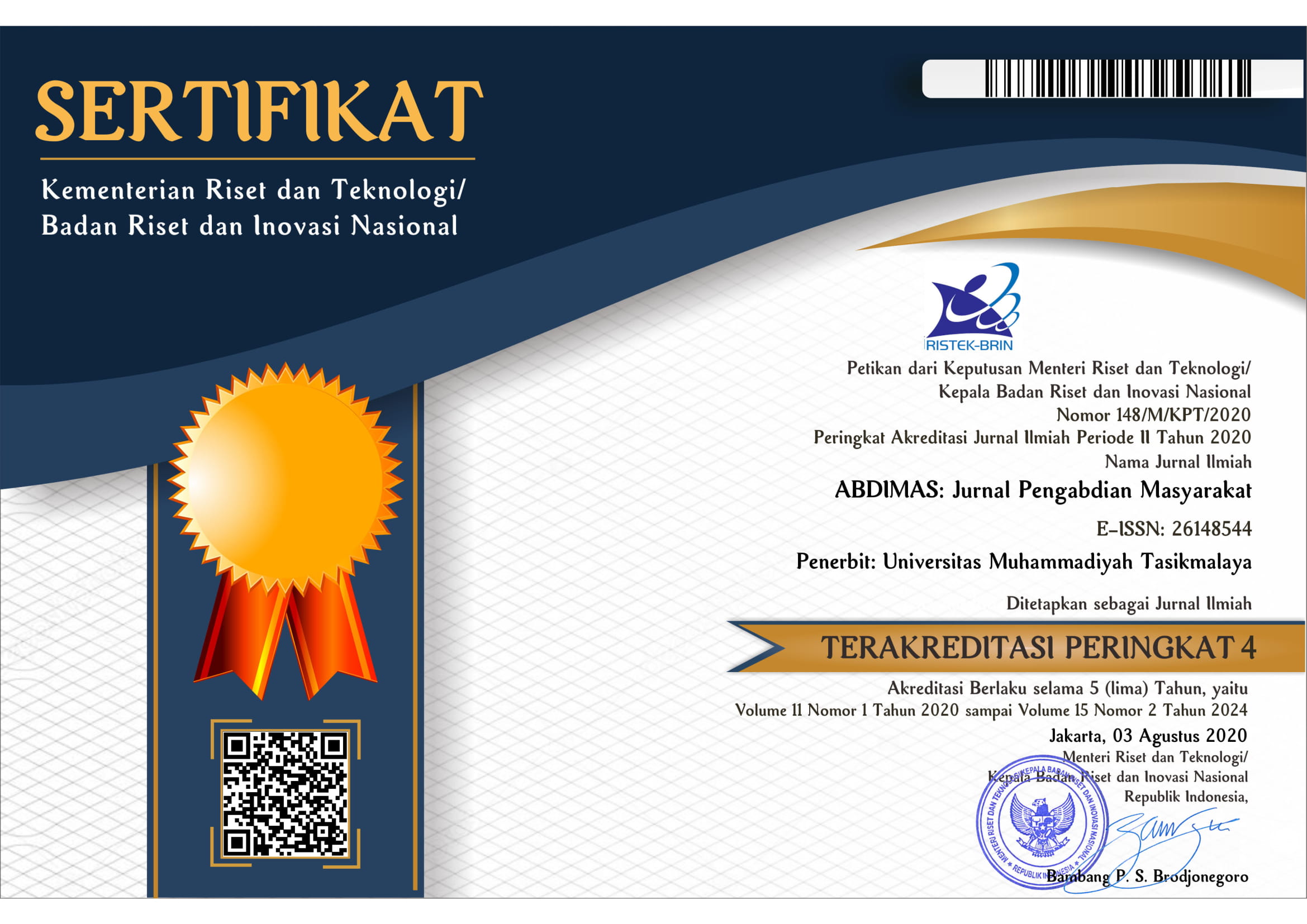Product Quality Improvement Through Training on Tempeh Packaging at PRIMKOPTI SWAKERTA Semanan
DOI:
https://doi.org/10.35568/abdimas.v4i2.1466Keywords:
Tempeh, food packaging, product qualityAbstract
Packaging is the first thing seen in a product and today many companies are focused on developing product packaging designs to compete in the market. The improvements in the type and design of packaging can be done PRIMKOPTI SWAKERTA Semanan to maintain customer loyalty. The purpose of this dedication is to provide knowledge of more environmentally friendly packaging alternatives to support the sustainable development of the tempeh industry and its processing in Semanan. Devotional activities begin with an introductory survey and then continue with training conducted online with the devotional team and tempeh craftsmen. The delivery of several training materials was done in parallel related to quality improvement, some of these materials such as the application of Good Manufacturing Practice, maintenance of production machines and food packaging. The survey results showed that 66.7 % of craftsmen use clear plastic with a simple design and some do not even use labels. The remaining 33.3 % of tempeh craftsmen use a combination of aluminium foil and plastic packaging. Alternative solutions are provided in improving the quality of tempeh products through banana leaf packaging. Banana leaves help the process of fermentation on tempeh and also increase consumer interest in buying because it is preferred. Kraft paper packaging is recommended for use because it can reduce the risk of rancidity on tempeh chips and extend the shelf life. Semanan tempeh makers can use this food packaging alternative to attract back consumers' interest that decreased during the pandemic.
Downloads
References
Ahmed, RR, Parmar, V., & Amin, MA (2015). Impact of Product Packaging on Consumer's Buying Behavior. European Journal of Scientific Research202X European Journal of Scientific Research, 16, 35–42. https://doi.org/10.13140/2.1.2343.4885
Habyba, AN, Delfitriani, & Djatna, T. (2019). An affective design for jenang packaging in Indonesia. IOP Conference Series: Earth and Environmental Science, 230(1). https://doi.org/10.1088/1755-1315/230/1/012030
Iskandar, J., Busnetty, I., & Murwonugroho, W. (2021). Increasing Semanan Tofu Marketing Through Drive Thru Service Platforms. PKM Journal: Community Service, 04(04), 423–433.
Maharani, DM, Bintoro, N., & Rahardjo, B. (2012). Kinetics of Rancidity Changes in Fried Peanuts During Storage. Agritech: Journal of the Faculty of Agricultural Technology UGM, 32(1), 15–22. https://doi.org/10.22146/agritech.9651
Radiati, A., & Sumarto, S. (2016). Analysis of Physical Properties, Organoleptic Properties, And Nutritional Content Of Tempeh Products From Non-Soy Beans. Journal of Food Technology Applications, 5(1), 16–22. https://doi.org/10.17728/jatp.v5i1.32
Salim, R., Zebua, ET, & Taslim, T. (2017). Analysis of the Type of Packaging Against Protein Content and Water Content in Tempeh. Journal of Catalysts, 2(2), 106–111. https://doi.org/10.22216/jk.v2i2.22531
Sucipta, IN, Suriasih, K., & Kenacana, PKD (2017). Food Packaging Study of Safe, Convenient, Effective And Efficient Packaging. Denpasar, Universitas Udayana Press, 1–178.
Wikström, F., Williams, H., Verghese, K., & Clune, S. (2014). The influence of packaging attributes on consumer behavior in food-packaging life cycle assessment studies - A neglected topic. Journal of Cleaner Production, 73, 100–108. https://doi.org/10.1016/j.jclepro.2013.10.042
Wilujeng, FR, & Wijaya, T. (2019). Application of the DMAIC Method for Quality Control in Tempeh Semanan SMEs. Proceedings of the #1 Young Intellectuals Seminar, Innovation in Science, Technology and the Arts in Planning and Design of the Built Environment, April, 266–271.
Wyrwa, J., & Barska, A. (2017). Packaging as a Source of Information about Food Products. Procedia Engineering, 182, 770–779. https://doi.org/10.1016/j.proeng.2017.03.199














